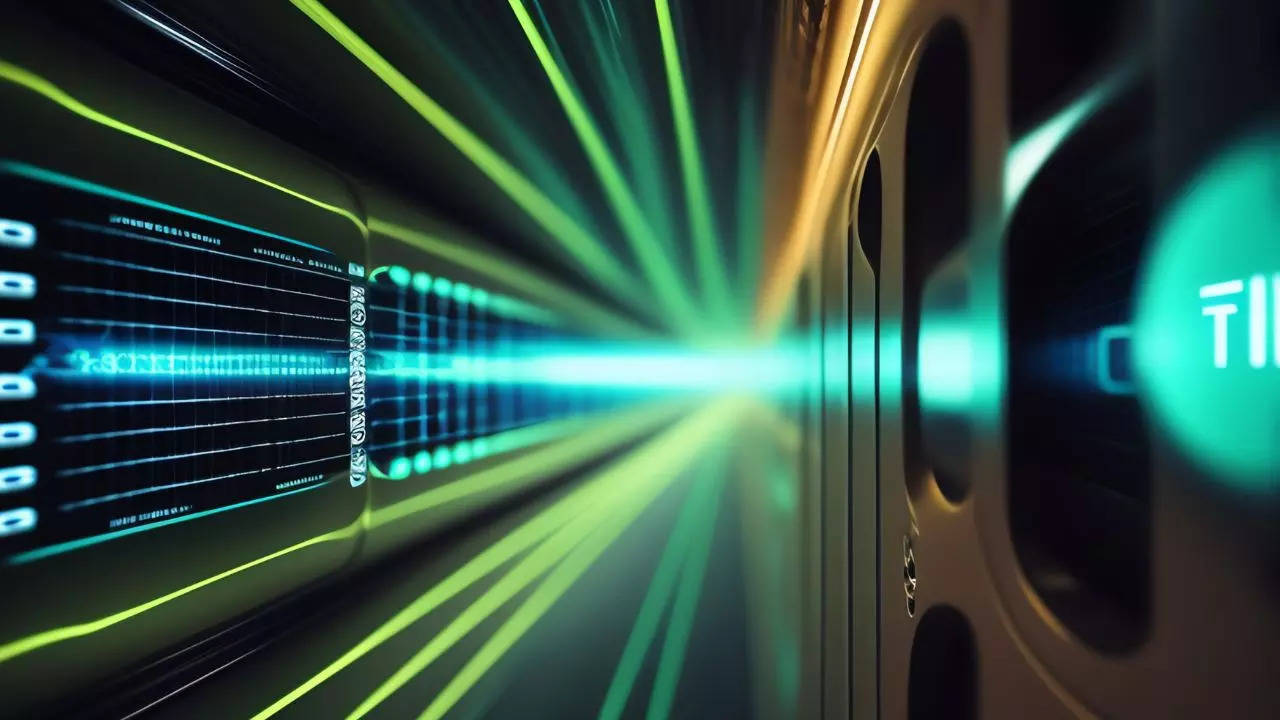
NEW DELHI: A group of scientists from around the world is reconsidering the fundamental concepts of radiation physics in their quest to super bright light sources. In a latest study featured in the journal Nature Photonics, scientists from Portugal’s Instituto Superior Técnico (IST), the University of Rochester, the University of California, Los Angeles, and France’s Laboratoire d’Optique Appliquée have suggested innovative methods utilizing quasiparticles to generate light sources with the same level of intensity as the most advanced existing sources, yet significantly smaller in size.
Quasiparticles are created when multiple electrons move in a synchronized manner. These quasiparticles are capable of moving at varying speeds, even faster than light, and they are able to withstand extreme forces, like those in the vicinity of a black hole.
Light sources utilizing quasiparticles might offer a significant edge compared to available options, such as rare and bulky free electron lasers, which are not practical for the majority of research facilities, medical institutions, and businesses. The research suggests that quasiparticles could generate exceptionally intense light over very short distances, potentially igniting substantial scientific and technological progress in laboratories worldwide. It also states that the simplicity of the quasiparticle method renders it suitable for practical demonstrations within current laser and accelerator facilities.
“The most fascinating aspect of quasiparticles is their ability to move in ways that would be disallowed by the laws of physics governing individual particles,” said John Palastro, senior scientist at the Laboratory for Laser Energetics, an assistant professor in the Department of Mechanical Engineering, and an associate professor at the Institute of Optics.
Palastro and his team investigated the unique characteristics of quasiparticles within plasmas by running advanced computer simulations on supercomputers provided by the European High-Performance Computing Joint Undertaking. Their research reveals potential uses for light sources based on quasiparticles such as non-destructive imaging for virus scanning, gaining insights into biological processes like photosynthesis, making computer chips, and investigating the nature of matter within celestial bodies such as planets and stars.
Bernardo Malaca, a doctoral student at IST and the study’s primary author said, “The flexibility is enormous. Even though each electron is performing relatively simple movements, the total radiation from all the electrons can mimic that of a particle moving faster than light or an oscillating particle, even though there isn’t a single electron locally that’s faster than light or an oscillating electron.”
Quasiparticles are created when multiple electrons move in a synchronized manner. These quasiparticles are capable of moving at varying speeds, even faster than light, and they are able to withstand extreme forces, like those in the vicinity of a black hole.
Light sources utilizing quasiparticles might offer a significant edge compared to available options, such as rare and bulky free electron lasers, which are not practical for the majority of research facilities, medical institutions, and businesses. The research suggests that quasiparticles could generate exceptionally intense light over very short distances, potentially igniting substantial scientific and technological progress in laboratories worldwide. It also states that the simplicity of the quasiparticle method renders it suitable for practical demonstrations within current laser and accelerator facilities.
“The most fascinating aspect of quasiparticles is their ability to move in ways that would be disallowed by the laws of physics governing individual particles,” said John Palastro, senior scientist at the Laboratory for Laser Energetics, an assistant professor in the Department of Mechanical Engineering, and an associate professor at the Institute of Optics.
Palastro and his team investigated the unique characteristics of quasiparticles within plasmas by running advanced computer simulations on supercomputers provided by the European High-Performance Computing Joint Undertaking. Their research reveals potential uses for light sources based on quasiparticles such as non-destructive imaging for virus scanning, gaining insights into biological processes like photosynthesis, making computer chips, and investigating the nature of matter within celestial bodies such as planets and stars.
Bernardo Malaca, a doctoral student at IST and the study’s primary author said, “The flexibility is enormous. Even though each electron is performing relatively simple movements, the total radiation from all the electrons can mimic that of a particle moving faster than light or an oscillating particle, even though there isn’t a single electron locally that’s faster than light or an oscillating electron.”
